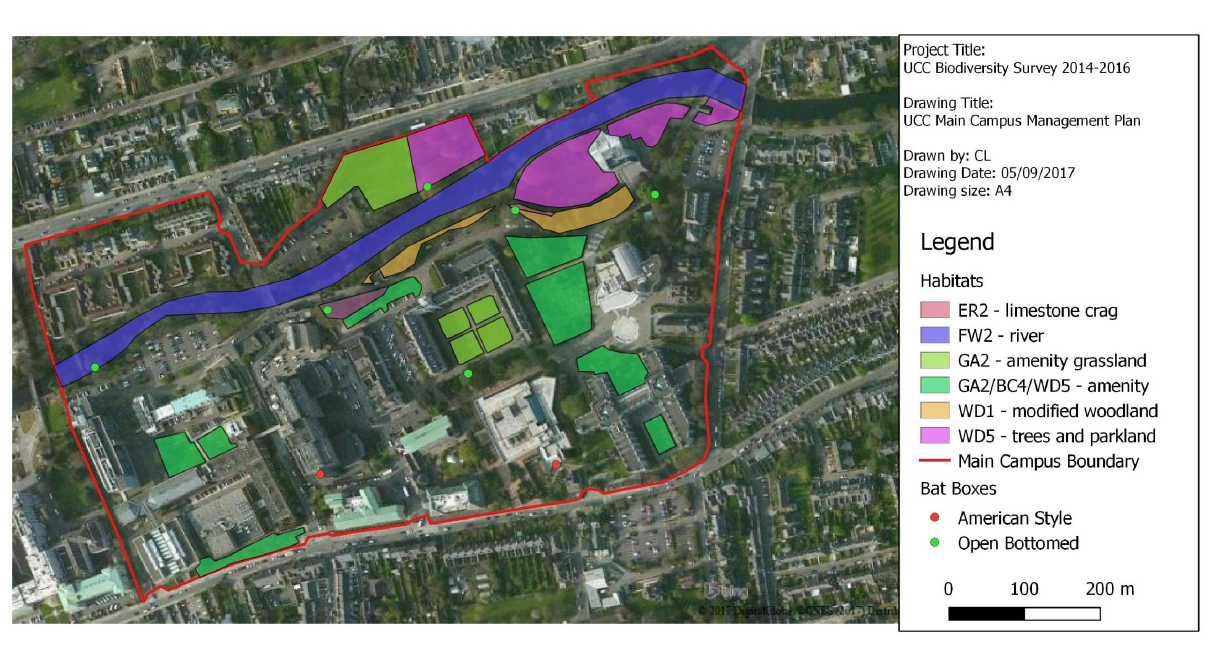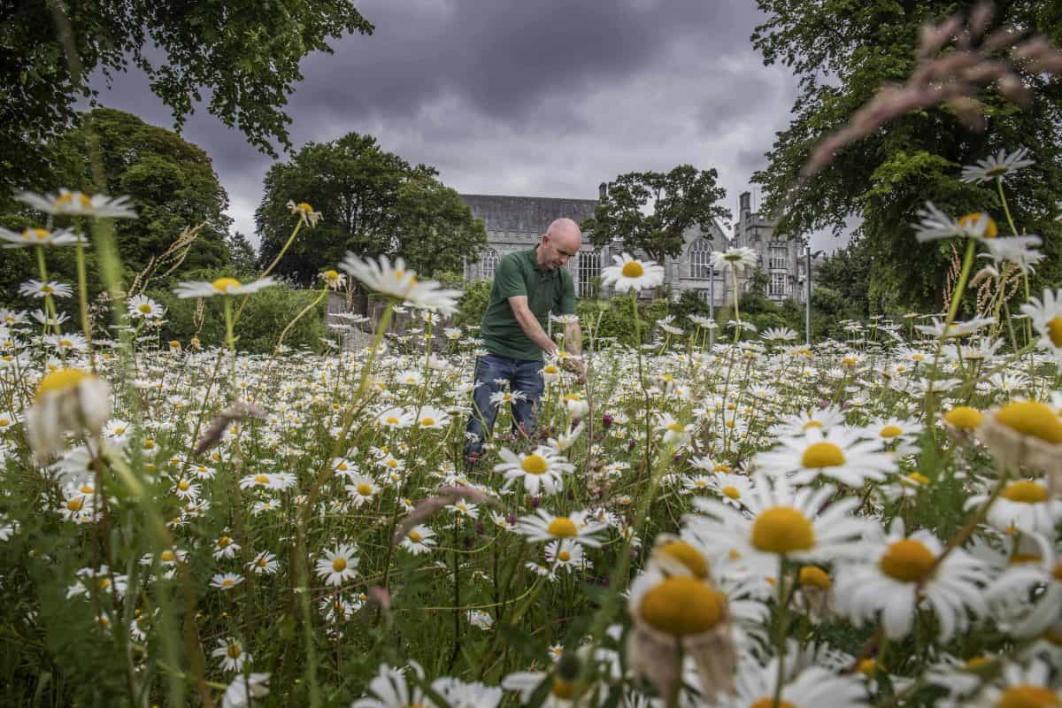- Home
- About
- Student Led
- Research Informed
- Practice Focused
- Resources
- News
- Green Campus Podcasts
- Case Studies
- Green Labs Community
Habitats and their Management
Habitat Surveys
From 2014 to 2016, Bat Surveys, Habitat Surveys, Bryophyte Surveys and Mammal Surveys were undertaken on UCC Main Campus, Distillery Fields, Western Campus, ERI, Mardyke, and Curaheen sites. A total of twenty-two habitats were recorded, some of which were assessed as having negligible importance for biodiversity, while others were assessed as being of moderate-high importance for local biodiversity. A section of Riparian Woodland, which is Annex I habitat under the EU Habitats Directive was found at the ERI.

A total of 86 bryophyte species were recorded during bryophyte surveys of UCC Main Campus, North Mall Campus and Mardyke Sports Grounds, including an assemblage of County Importance on an exposed calcareous rock face on Main Campus. In addition a liverwort species recorded on the same calcareous rock face was recorded as new to the Mid Cork Vice County and a moss species recorded on a stone wall on the boundary of the Mardyke Sports Grounds was also a first for Mid Cork. Below is the habitat map prepared for UCC’s main Campus. Based on the results of all surveys, a Biodiversity Action Plan has been prepared and can be downloaded at this link UCC Biodiversity Action Plan 2018-2023.pdf.

UCC and the River Lee
UCC campus overlooks both the north and south channels of the River Lee. This brings an enormous amount of diversity in flora and fauna to the campus. Signs of otters are a regular feature of the river banks, herons are ubiquitous and kingfishers have been spotted feeding in the water from time to time. At night, bats emerge from crevices and roosts to feed along the river.
The north and south channels of the River Lee are home to 11 individual otters, identified through tracks and spraints along the banks of the river. UCC’s School of Biological, Earth and Environmental Science, and Cork Nature Network are among the groups that survey and study the behaviour of these elusive mammals.
Grounds Management at UCC

UCC grounds staff work under the direction of the Estates Manager, Barrie Curley. The team consists of:
- John Murphy – Grounds Foreman
- Pat Hallinan – Grounds Operative
- Noreen O’ Sullivan – Grounds Operative
- Ger Creedon – Grounds Operative
Care for the environment is at the core of how the Estates grounds staff carry out their day to day activities. Here are just some of the greening activities undertaken by the Grounds staff in recent years
- Obtained new mowers to mulch the grass back into the soil.
- Battery tools have been bought replacing petrol models.
- A new Electric Vehicle was purchased to replace a tractor and trailer.
- An interactive map of the significant trees has been developed and made available online.
- Tree Planting Schedule for the next 5 years is underway with 72 new Trees planted in the past few years and more to be planted this year.
- Every Tree on Campus now undergoes a yearly survey, with all surveys available online.
- The grounds staff use an environmentally friendly fuel in their motorised tools where by the containers are recyclable and the petrol is free from benzene and hydrocarbons.
- A companion planting scheme keeps Aphids at bay naturally and encourages wildlife into the college environs e.g. butterflies, hoverflies, etc.
- A native planting scheme comprising of native trees and shrubs which will encourage birds, insects and wildlife into the college.
- A contract for weed eradication on campus, using the most environmentally friendly system, is in place.
- Any leftover grounds waste is composted onsite to be reused on campus green areas.
- An extensive knotweed eradication programme, utilising international best practice techniques, is in place.
- Air Spade work has been carried out on Specimen Trees
- Biodiversity training has been provided to all grounds staff.
- The Gaol Cross Entrance to UCC was redeveloped and enhanced to create a more natural and biodiversity enriched landscape area leading into the main campus. A number of measures were taken including transforming one area into a native wildflower meadow, clearance of introduced species from another, and developing a ‘rain garden’ or biofiltration area using low maintenance planting to attenuate and filter rain water from the roof of the West Gate Lodge. [‘A rain garden is a planted depression or a feature swale that allows rainwater runoff from impervious urban areas such as roofs, walkways etc. reducing rainwater runoff by allowing storm water to soak into the ground (as opposed to flowing into storm drains and surface waters. They also improve water quality in nearby bodies of water’].
- A wildflower meadow has been planted outside the O’Rahilly Building.
- Swift boxes were installed in North mall, complete with Cameras and calling tape (April 2014).
- Bat Boxes are in the process of being installed in appropriate areas across campus.
